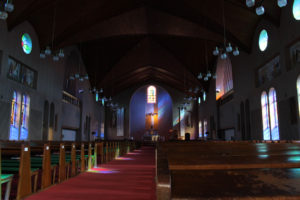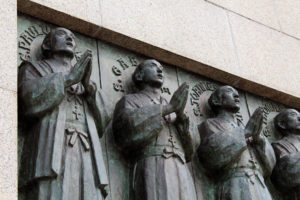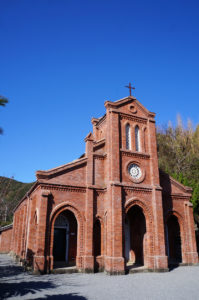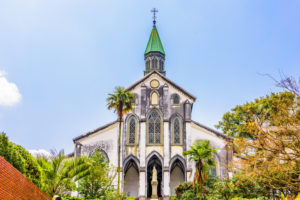Godlike mountains, remote islands, and ancient castles are among Japan’s World Heritage Sites. While you may never have heard of a UNESCO World Heritage Site before visiting Japan, the distinction is a highly revered one.
The United Nations Educational, Scientific and Cultural Organization (UNESCO) awards the title to locations around the world with “outstanding universal value.” The list is basically a holy grail of travel destinations from natural wonders to those with cultural significance.
Here are the 23 UNESCO World Heritage Sites of Japan.
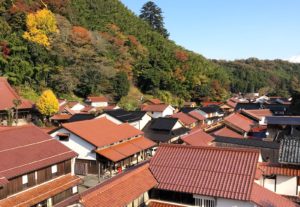
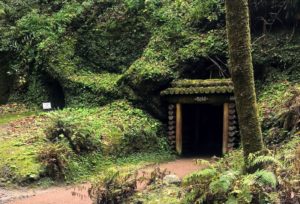
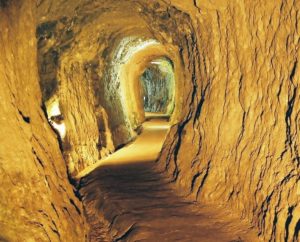
23
Iwami Ginzan Silver Mine
Shimane Prefecture
During the 17th century, a third of the world’s silver was produced in the small town of Omori. The mines were closed down in the 1920s but the surrounding area, dubbed “Iwami Ginzan Silver Mine and its Cultural Landscape” was registered with UNESCO in 2007.
Take a relaxing stroll down Omori street past merchant houses from the 1500s that have been converted into cozy cafes. Visiting the perfectly preserved streets and narrow pathway of Ryugenji Mabu Mineshaft will transport you back to Japan’s bygone era of simpler times.
- Don't miss: German-style pastries at Backerei Konditorei Hidaka. A delightfully unexpected treat!
- Closest bus stop: Omori bus stop
- Ryugenji Mabu Mineshaft only costs ¥200 if you show your residence card or passport.

22
Itsukushima Shrine
Hiroshima Prefecture
You’ve definitely seen the red torii gate of Itsukushima Shrine floating angelically on the ocean if you’ve ever Googled images of Japan. The shrine is located on the tiny island of Miyajima, a 10-minute ferry ride away from the mainland of southern Hiroshima Prefecture.
Snap a perfect picture of the grand torii at high tide when it appears to be floating, or walk right up and touch it during low tide. With its hypnotic otherworldly atmosphere at dusk, it’s no wonder the gate is considered the pathway between the human and spirit realm.
- Don’t miss: Momiji Manju Tempura. Deep-fried maple leaf-shaped treats stuffed with a variety of tasty fillings like cheese, chocolate, or classic red bean paste. Only available here!
- Closest station: Miyajimaguchi Station. From there, take a ferry to the island.
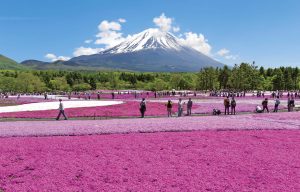
21
Mount Fuji
Shizuoka Prefecture
Mount Fuji is the unquestionable symbol of Japan whether you’re brave enough to try climbing the 3,776-meter tall mountain, or just lucky enough to catch a glimpse of it while riding the bullet train. The most scenic vantage points to admire the snow-capped mountain from afar are Lake Kawaguchi or the Chureito Pagoda in Yamanashi Prefecture.
- Don't miss: The view from the Chureito Pagoda during the cherry blossom season. Quintessential Japan.
- Closest bus stop: Chureito Iriguchi bus stop
- Closest station: Kawaguchiko Station
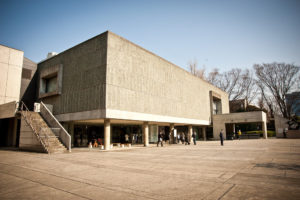


20
The National Museum of Western Art
Tokyo
The Gate of Hell awaits you in Ueno, at the National Museum of Western Art. The museum is a monument to European masterpieces throughout the ages and features work by legendary French sculptor Auguste Rodin. Fall in love with classics from the 14th through the 20th century by Monet, Delacroix, and Vincent Van Gogh. It’s a unique slice of Europe, right in the heart of Tokyo.
- Expert tip: The permanent collection is free annually on May 18, and Nov. 3, as well as the second and fourth Saturday of each month.
- Closest station: Ueno Station
- ¥500 for adults and¥250 for university students. Special exhibitions cost extra and vary in price.

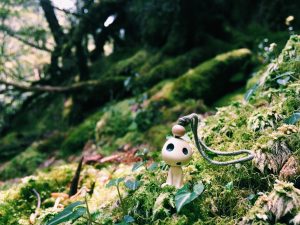
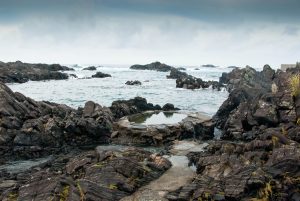
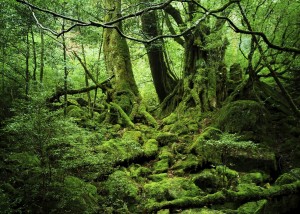
19
Yakushima
Kagoshima Prefecture
Take a journey back to your roots on Yakushima island in southern Kagoshima Prefecture. The mysterious remote island is known for its expansive cedar forests that have been undisturbed for thousands of years. It’s home to Jomonsugi, a 7,200-year-old Japanese cedar tree with gnarly alien-esque roots. It’s one of the oldest trees in the world.
The misty moss-covered island was also the inspiration for Studio Ghibli’s renowned film, Princess Mononoke. Hike through mystic forests or bathe in oceanside hot springs as you soak up the energy of the forest gods surrounding you.
- Don't miss: Bathe right in the ocean at Yudomari onsen!
- Take a ferry or high-speed boat from Kagoshima to Miyanoura Port.
- Yakushima Airport is accessible via direct flight from Kagoshima, Osaka, and Fukuoka.
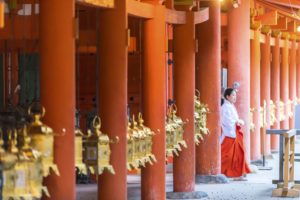
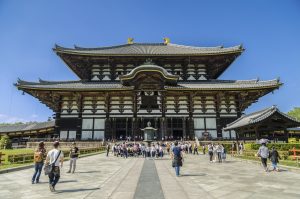

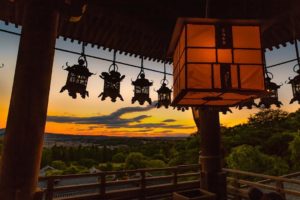
18
Monuments of Ancient Nara
Nara Prefecture
Nara city has eight World Heritage sites: Todai-ji Temple, Kofuku-ji Temple, Yakushi-ji Temple, Kasuga Taisha, Gango-ji Temple, Toshodai-ji Temple, Heijo Palace, and Mount Kasuga Primeval Forest. These eight cultural assets are collectively classified as the “Monuments of Ancient Nara.” Feed the sacred deer — who won’t hesitate to chase you down for food — as you discover all the historical relics of the ancient capital.
- Don't miss: The bowing deer at Nara Park!
- Closest station: Nara Station
- Be mindful of carrying paper and plastic trash if visiting Nara Park. Recently several deer have died after eating plastic.
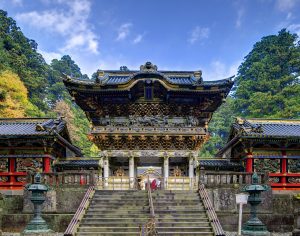
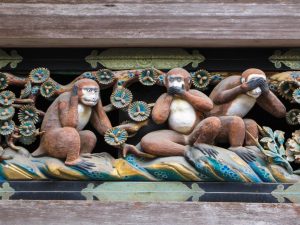
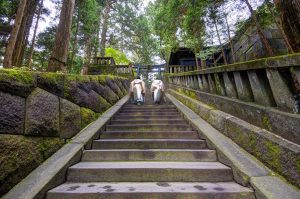
17
Shrines of Nikko
Tochigi Prefecture
Many travelers know Kyoto as Japan’s goldmine of historic temples and shrines but probably aren’t familiar with Nikko. Don’t sleep on this quiet — and less crowded — city an hours’ day trip north of Tokyo.
Toshogu Shrine, Nikko’s star attraction, is actually a complex of 55 shrines and includes the tomb of Tokugawa Shogunate leader Tokugawa Ieyasu. Enjoy the colorful ornate structures against the lush forest backdrop of this postcard-perfect city.
- Don't miss: The intricate wood carvings scattered across the shrine, especially the Three Wise Monkeys “hear no evil, speak no evil, see no evil.”
- Closest station: Nikko Station
- ¥1,300 to enter the Toshogu Shrine complex
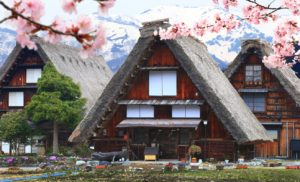
16
Shirakawa-go and and Gokayama
Gifu Prefecture
The farmhouses of Shirakawa-go and Gokayama villages take visitors deep into the mountains of central Japan. The houses’ thick, gassho-zukuri roofs were designed to withstand heavy snowfall during winter, allowing it to slide off easily.
Gassho means to press your hands together in prayer, which is exactly what the roofs look like. Stay overnight in one of the old houses surrounded by rice fields or join a soba noodle-making workshop!
- Expert tip: For a sweeping overhead view of the village, take the short climb or shuttle bus ride to the Shiroyama Viewpoint.
- Closest bus stop: Shirakawa-go bus stop
- Closest station: Toyama Station
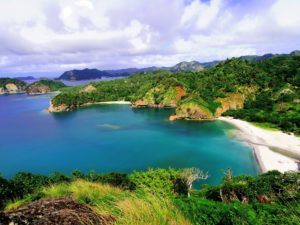
15
Ogasawara Islands
Tokyo
Picture hills covered by vast jungles and unspoiled beaches with uninterrupted views of the Pacific Ocean. Though these remote islands are technically part of Tokyo, it’ll take you a 24-hour boat ride to reach them.
Ogasawara is actually a group of 30 subtropical islands, but only two — Chichi-jima and Haha-jima — are actually inhabited. Swim with dolphins or enjoy snorkeling and scuba diving year-round at this paradise getaway.
- Don't miss: The real-life shipwreck at Sakaiura beach!
- Take a liner ship from Tokyo Bay Takeshiba Kyakusen Terminal
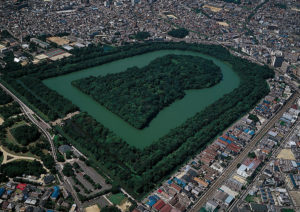
14
Mozu Kofun Tombs
Osaka Prefecture
This huge cluster of tombs just south of Osaka city consists of 49 burial mounds built during the Kofun period (about 300 to 538 AD) for the ruling class. The most impressive is the mausoleum of Emperor Nintoku with its unique keyhole shape, surrounded by a huge moat. At 600 meters wide (almost 2000 feet), it’s Japan’s biggest burial mound and one of the biggest in the world! This is the newest heritage site, being granted the UNESCO distinction in July 2019.
- Expert tip: The tombs aren’t generally open to the public, but their massive size can be appreciated from the free observation deck on the 21st floor of the Sakai City Hall.
- Closest station: Mozu Station
- Closest bus stop: Sakai-higashi Station

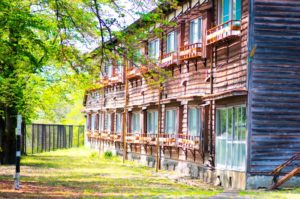
13
Tomioka Silk Mill
Gunma Prefecture
Built in 1872, the Tomioka Silk Mill was the first of its kind in Japan and played a vital role in Japan’s international trade business during the Meiji period. At that time, Japanese silk was a major trade commodity that helped the country’s textile industry prosper. The mill has been well preserved since it closed in the ‘80s and a few of its main buildings are now open for tours. Just in case you’ve ever been curious about how your favorite silky bed sheets are made.
- Expert tip: Guided tours are in Japanese only, but audio guide rentals are available in various languages. Or, download the audio tour on your smartphone for free!
- Closest station: Joshu-Tomioka Station
- ¥200 for a guided tour (in Japanese only), ¥200 for an audio guide

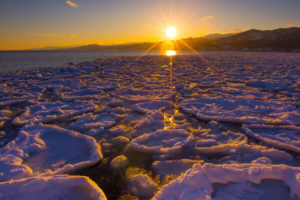
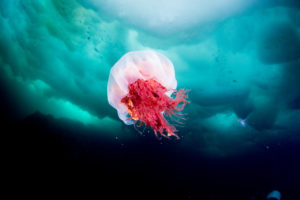
12
Shiretoko Peninsula
Hokkaido Prefecture
Journey to the far northeastern wilderness of Hokkaido’s Shiretoko Peninsula for this National Park flourishing with biodiversity. The area is home to several species of endangered and threatened migratory birds, strange plants that you won’t find anywhere else, and salmonid species. In the indigenous Ainu language, Shiretoko means “the end of the earth,” a fitting name for what feels like visiting another planet — one without industrialization and human interruption.
- Don't miss: Massive illuminated sculptures during the Shiretoko Drift Ice and Snow Festival in late January to February. Take an “ice-walking tour” if you’re brave enough!
- Closest airport: Memanbetsu Airport
- ¥500 for the festival
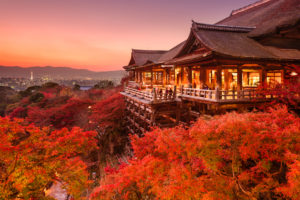
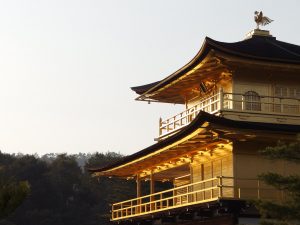

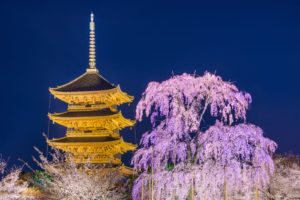
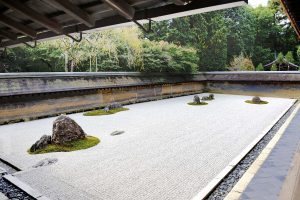
11
Monuments of Ancient Kyoto
Kyoto Prefecture
The story of ancient Japan is embedded in the countless temples, castles, and tea houses lining the streets of Kyoto city. From golden and silver glam twins Kinkaku-ji and Ginkaku-ji to the awe-inspiring Kiyomizudera, there are over a dozen heritage sites spread across Kyoto and neighboring cities. You have to taste the best matcha in Japan in Kyoto’s Uji city, whose Byodoin Temple is another UNESCO site. It’s the temple on the back of the ¥10 coin!
- Don't miss: The authentic tea ceremony experience at Taihoan tea house in Uji.
- Closest station: Kyoto Station
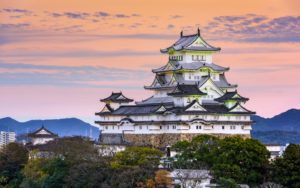
10
Himeji Castle
Hyogo Prefecture
Bombings during World War II and the Great Hanshin Earthquake of 1995 couldn’t shake Himeji Castle — it’s been standing defiantly for 400 years. The resilient white fortress is nicknamed “The White Heron Castle” as it resembles a graceful bird taking flight. Even more badass is that it was a film set for a James Bond movie! Explore its six floors, with traditional tatami rooms and weapon displays, or take a boat ride around the castle moat. On weekends you may even get to meet a samurai.
- Don't miss: Himeji castle is a fantastic place to see cherry blossoms in spring!
- ¥1000 to enter the castle, additional ¥1000 for the boat ride
- Closest station: Himeji Station
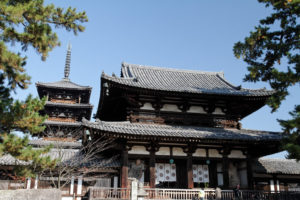
9
Horyu-ji Temple
Nara Prefecture
If you hadn’t already noticed, UNESCO has a thing for the world’s biggest, baddest, and oldest. Horyu-ji Temple joins that list, with the oldest wooden structures in the world. The temple’s 46-acre grounds are divided into Eastern and Western precincts separated by an impressive collection of Buddhist artifacts and treasures. The Eastern Precinct is where you’ll find the old wooden structures — the towering five-storied pagoda, Main Hall, and Central Gate.
- Don't miss: The guardian deity statues at the Central Gate are the oldest of their kind in Japan.
- Closest station: Horyu-ji Station
- Closest bus stop: Horyujimae bus stop
- ¥1,500 entry fee
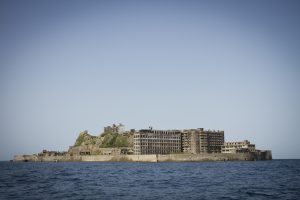
8
Meiji Industrial Revolution Sites
As relics of Japan’s iron, steel, and coal industries during the Meiji-era, this collection of manufacturing sites spans eight prefectures from Kagoshima to Saga. Japan was the first Asian country to industrialize in a bid to keep up with America and Europe towards the end of the Edo period. The sites include the long-abandoned Gunkanjima Island, which was the inspiration behind the villain’s hideout in the 2012 Bond film Skyfall.
Other highlights are the industrial complex around Senganen Garden, ruins of the Miike Coal Mines in Kumamoto, and Hagi City in Yamaguchi Prefecture which is considered the birthplace of the Meiji Restoration. While the mostly-forgotten ruins have become hubs for urban explorers looking for creepy Instagram shots, they are an important part of Japan’s development as a country.
- Don't miss: Exploring the streets of former castle town Hagi, is a must for history buffs.
- Gunkanjima cannot be visited without a sanctioned tour group and certain areas are off-limits due to the danger of its crumbling buildings.
7
Hidden Christian Sites of Nagasaki
Nagasaki Prefecture and Kumamoto Prefecture
Practitioners of Christianity were persecuted when the religion was outlawed in Japan during the Edo-period until about 1873. To escape death, many of them fled to the isolated areas of southwestern Japan, mainly the Goto Islands and Amakusa Island. Unveil the dark history of these “hidden Christians” at these gothic churches, and enjoy the intimate beaches while you’re at it.
- Don't miss: Glamping on Fukue island!
- Take the ferry from Nagasaki Port
- Closest Airport: Fukue Airport

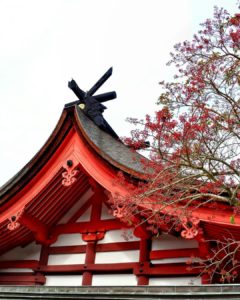
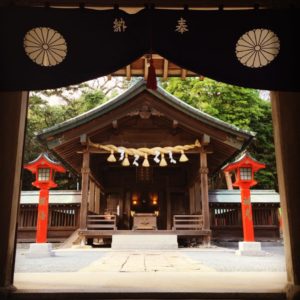
6
Okinoshima Island and Munakata Taisha
Fukuoka Prefecture
Okinoshima Island off the northwestern coast of Kyushu is considered so holy that visitors are strictly prohibited. Only priests who tend to the island’s Munakata Shrine are allowed to step foot on its shores. Along with two sister shrines in Fukuoka’s Munakata city, the trio is known as Munakata Taisha — the head of thousands of Munakata shrines across Japan. Enshrined here are the daughters of the sun goddess Amaterasu, the most important Shinto deity in Japan. The ancient rituals practiced here have remained largely unchanged for centuries.
- Closest station: Togo Station
- While Okinoshima Island is off-limits, the other two shrines of Munakata Taisha can be visited on mainland Kyushu and nearby Oshima Island.
- Oshima Island can be reached via ferry from Konominato Port in Fukuoka.
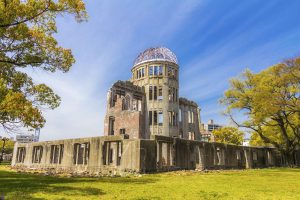
5
Atomic Bomb Dome
Hiroshima Prefecture
Seeing the remnants of the atomic bomb dropped on Hiroshima during World War II with your own eyes is chilling. Still, history is important and no trip to the city of Hiroshima is complete without visiting the A-Bomb Dome and Peace Memorial Park. Formerly the Hiroshima Prefectural Industrial Promotion Hall, the skeletons of the dome remind us of the harrowing tragedies of war. It’s the only structure remaining in the city predating the atomic bomb blast of 1945.
- Don't miss: Annually on August 6, a peace memorial ceremony is held in front of the Memorial Cenotaph for the lives lost and to pray for peace.
- Closest station: Genbaku Dome-mae
- The A-Bomb Dome cannot be entered, but the Peace Memorial Museum costs ¥200
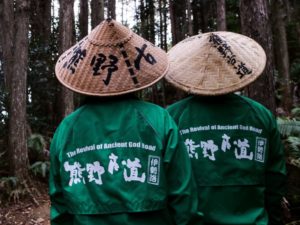
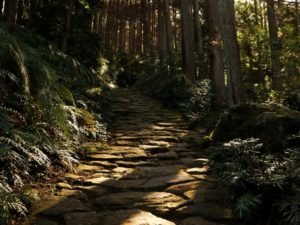

4
Kumano Kodo Pilgrimage Routes
Mie Prefecture and Wakayama Prefecture
The Kumano Kodo Pilgrimage Route is a network of walking trails in the Kansai region connecting some of the most sacred spots in Japan. The trails have been used by religious pilgrims traveling between Ise Jingu, the three Kumano Shrines, and Mount Koya for over 1000 years. You’ll walk away reborn after traversing the mountainous terrain and communing with the spirits of old.
- Expert tip: Take the often overlooked Iseji Route for a more off-the-beaten-path experience.
- Closest station: Varies depending on the route.
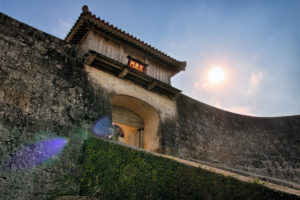

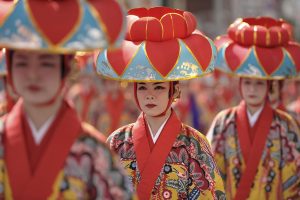
3
Sites of the Ryukyu Kingdom
Okinawa Prefecture
Prior to Japanese occupation in 1609, Okinawa was its own nation known as the Ryukyu Kingdom. The castles of the former kingdom were designated as heritage sites to protect the unique history and culture of the native people.
There are a total of nine castles and related sites including Shuri Castle which was home to the kingdom’s royal family. While the distinctively red castle is the only one in Okinawa that has been reconstructed, a visit to the other castle ruins will give you a greater appreciation for this often forgotten ethnic group.
- Shuri Castle was badly damaged by a fire in Oct. 2019. Several buildings are undergoing construction but the Seiden remains have been partially re-opened to visitors
- Don’t miss: The local snake sake, habushu, if you’re feeling adventurous.
- Closest airport: Naha Airport
- Closest station: Shuri Station (for Shuri Castle)
- Entry to Shuri Castle cost ¥820
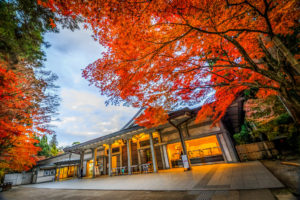
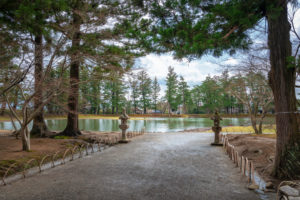
2
Monuments of Hiraizumi
Iwate Prefecture
Hiraizumi in Iwate was once a prosperous city with growing political power that rivaled Kyoto during the Heian-era. The city is home to five temples and gardens that are considered physical manifestations of the tranquil land Buddhists aspire to reach after death in Pure Land Buddhism. They include Chuson-ji Temple, Motsu-ji Temple, Mount Kinkeisan, Muryoko-in Ruins, and Kanjizaio-in Ruins. Chuson-ji Temple is the most famous, featuring a grand hall covered in gold similar to Kyoto’s Kinkaku-ji.
- Don't miss: The golden hall at Chuson-ji that rivals Kyoto’s Kinkaku-ji.
- Closest station: Hiraizumi Station
- ¥800 for Chuson-ji Temple
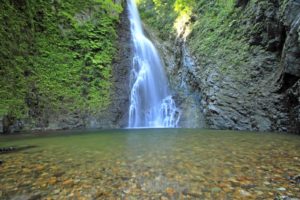
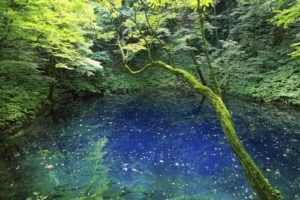

1
Shirakami Sanchi
Aomori Prefecture
This extensive mountain range stretches along the border between Akita and Aomori prefectures. A variety of hiking trails of various difficulties will take you through forests, around lakes, and over waterfalls. The Anmon Falls, a collection of three waterfalls as tall as 42 meters (137 feet), is the main attraction. Visit Juniko (the twelve lakes) for endless camping and fishing opportunities plus a mysterious pond whose striking blue color looks as if it’s been artificially dyed.
- Don't miss: The mysteriously blue Aoike Pond.
- Closest airport: Odate-Noshiro Airport
- Closest Station: Juniko Station
Tag us 
Traveling to one of these destinations? We want to know about it. Tag us on social media with #GaijinPotTravel (Your post may be featured on our site.)
